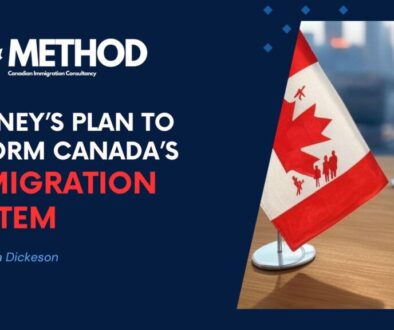Deciphering IRCC’s Criteria for Conducting Express Entry Draws
Unraveling the Factors Influencing IRCC’s Express Entry Draw Schedule
Express Entry Draw Predictability Pre-Pandemic:
Express Entry draws operated with a high degree of predictability before the onset of the COVID-19 pandemic. Occurring every two weeks on Wednesdays, these draws were characterized by consistent features, including over 3,000 Invitations to Apply (ITAs) for permanent residence and Comprehensive Ranking System (CRS) cut-offs typically around 470 points. This predictability was rooted in the system’s stability, marked by intact policy objectives and significant progress toward processing 80% of applications within a six-month timeframe.
Post-Pandemic Variability:
However, the landscape of Express Entry draws underwent a significant shift in the wake of the pandemic. A once-reliable pattern dissipated, and no discernible recurrence emerged in terms of draw timing, types, ITA numbers, or CRS cut-offs. Notably, the year witnessed regular draws until June, after which the introduction of category-based selection prompted increased draw frequency. An unprecedented 12 draws took place between June 27 and August 15, a departure from the previous norm of 4-8 draws over a comparable period.
Factors Influencing Draw Occurrence:
Several factors contributed to this shift in predictability. Firstly, the Immigration Levels Plan set by IRCC played a crucial role. The department annually outlines targets for permanent resident admissions, including specific figures for Express Entry candidates. The decision on whether to conduct further draws hinges on the constant evaluation of the number of permanent residence applications in the processing queue.
Policy objectives also played a pivotal role, guided by the Minister’s mandate to strengthen the national economy. The consideration of whether to conduct all-program draws, program-specific draws, or category-based invitations introduced an element of strategic decision-making. The pandemic prompted specific strategies, such as large draws for Canadian Experience Class (CEC) candidates, demonstrating the system’s adaptability to external challenges.
Changes to CRS and Express Entry Profiles:
Moreover, occasional alterations to the Comprehensive Ranking System (CRS) and Express Entry profiles contributed to variations in draw frequency. Changes in CRS points allocation, such as the 2020 increase for French proficiency, necessitated technical updates to maintain the accuracy of profile scores.
IT Issues:
The occurrence of IT issues, including glitches in the Express Entry profile builder, became an additional factor influencing draw schedules. Recent glitches led to extensions in submission timelines for affected candidates, highlighting the impact of technical challenges on the system.
Staffing Changes at IRCC:
Lastly, staffing changes within IRCC, driven by an ongoing reorganization following a report on departmental inefficiencies, added another layer of influence. Recommendations for restructuring are being implemented, impacting the personnel landscape within the department.
Conclusion:
In conclusion, the predictability of Express Entry draws has undergone a transformation post-pandemic, shaped by a combination of factors ranging from immigration targets and policy objectives to technical challenges and organizational adjustments. This adaptability underscores the system’s responsiveness to dynamic external conditions and the multifaceted considerations that shape the frequency and nature of Express Entry draws.



